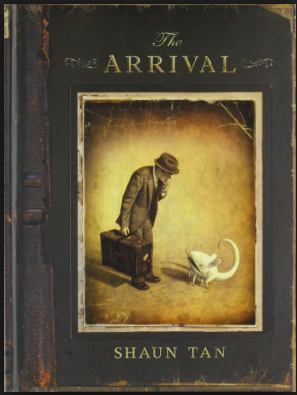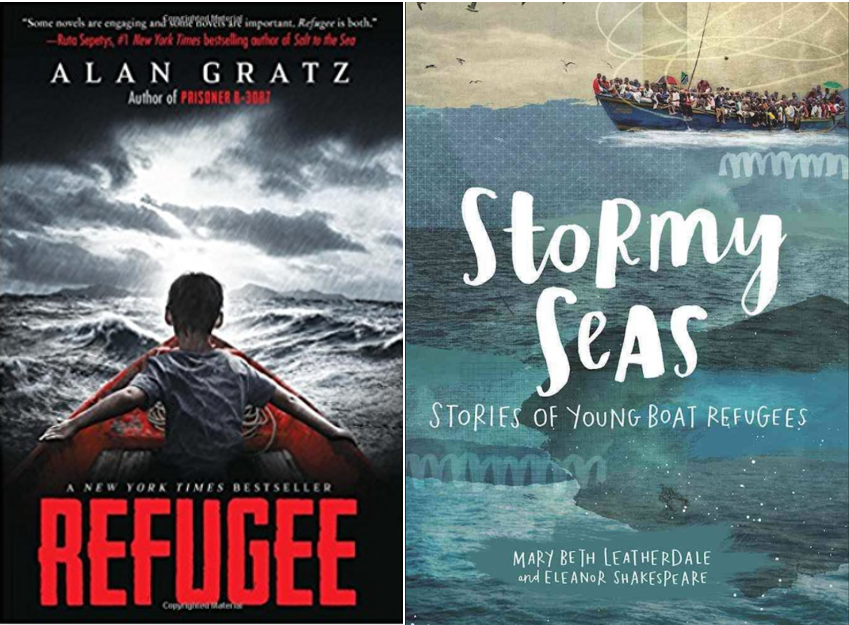Did you feel a call to action as images of immigrant children were shown being separated from their families?
Maybe your action manifested itself in calling politicians, writing letters, leveraging the power of social media; getting your message out based on your values and beliefs about this pressing issue.
I know many who took action, including myself, but it doesn’t seem like it’s enough. What’s most distressing to me are the polar-opposite opinions I read about immigrants entering the U.S.
I understand the need for border security. I also understand that so many of us cannot begin to identify with the desperation felt by those families and individuals fleeing oppression or danger. My family and friends accuse me of always referring to a book I’ve read when we discuss current events.
Well, this time is no different.
I immediately thought of Shaun Tan’s book, The Arrival, when the news broke about the situation at the border in Texas. School Library Journal’s review of The Arrival—
It depicts the journey of one man, threatened by dark shapes that cast shadows on his family’s life, to a new country. The only writing is in an invented alphabet, which creates the sensation immigrants must feel when they encounter a strange new language and way of life. A wide variety of ethnicities is represented in Tan’s hyper-realistic style, and the sense of warmth and caring for others, regardless of race, age, or background, is present on nearly every page. Young readers will be fascinated by the strange new world the artist creates, complete with floating elevators and unusual creatures, but may not realize the depth of meaning or understand that the man’s journey symbolizes. More sophisticated readers, however, will grasp the sense of strangeness and find themselves participating in the man’s experiences.
—Alana Abbott, James Blackstone Memorial Library, Branford, CT

The power of books to elicit empathy is undeniable. We talk often about books being windows, mirrors and doors for readers (Bishop, 1990). This is certainly a time when we need to call on books we know can give insight and understanding into a complex issue.
I’ve never emigrated to another country, but many students we learn alongside in our classrooms have. As educators we can learn (and lead) by providing texts for students to read–texts that allow them to explore first-hand (non-fiction and fiction) accounts of immigrants.
Alan Gratz’s book, Refugee, and Stormy Seas: Stories of Young Boat Refugees by Mary Beth Leatherdale are two such books that we need in classrooms and school libraries.

I know how I personally feel about immigration, but I also know it’s a complicated issue. It’s critical that I learn as much as I can by reading a variety of texts on the subject. And it’s important for us, as educators, to make news articles, fictional narratives, nonfiction texts and media accounts available for students so they, too, can formulate opinions. Students need not only formulate opinions, but opportunity to develop beliefs and values that lead to action.
Books can do that for kids. As educators, we have the responsibility and privilege to facilitate that.









